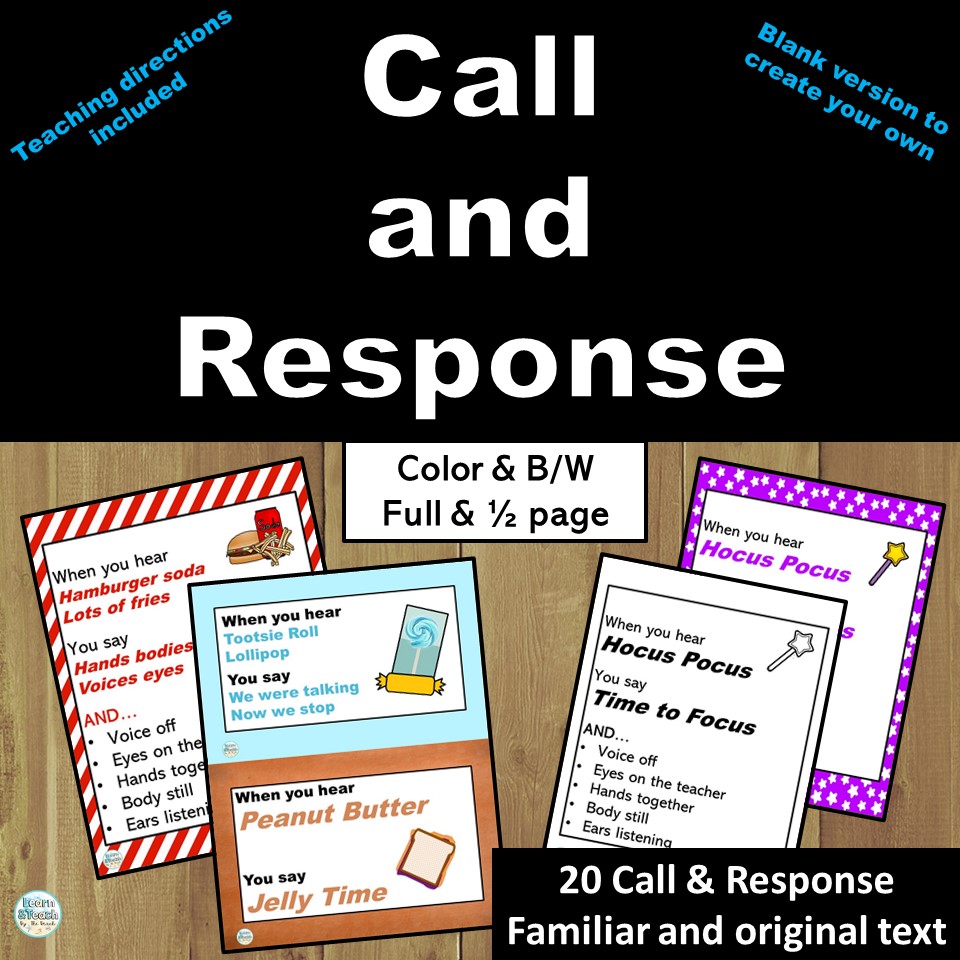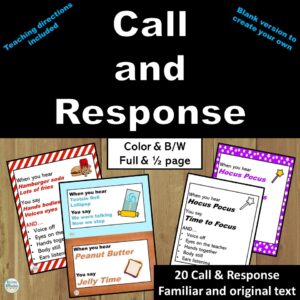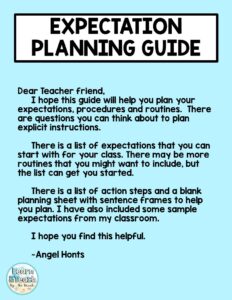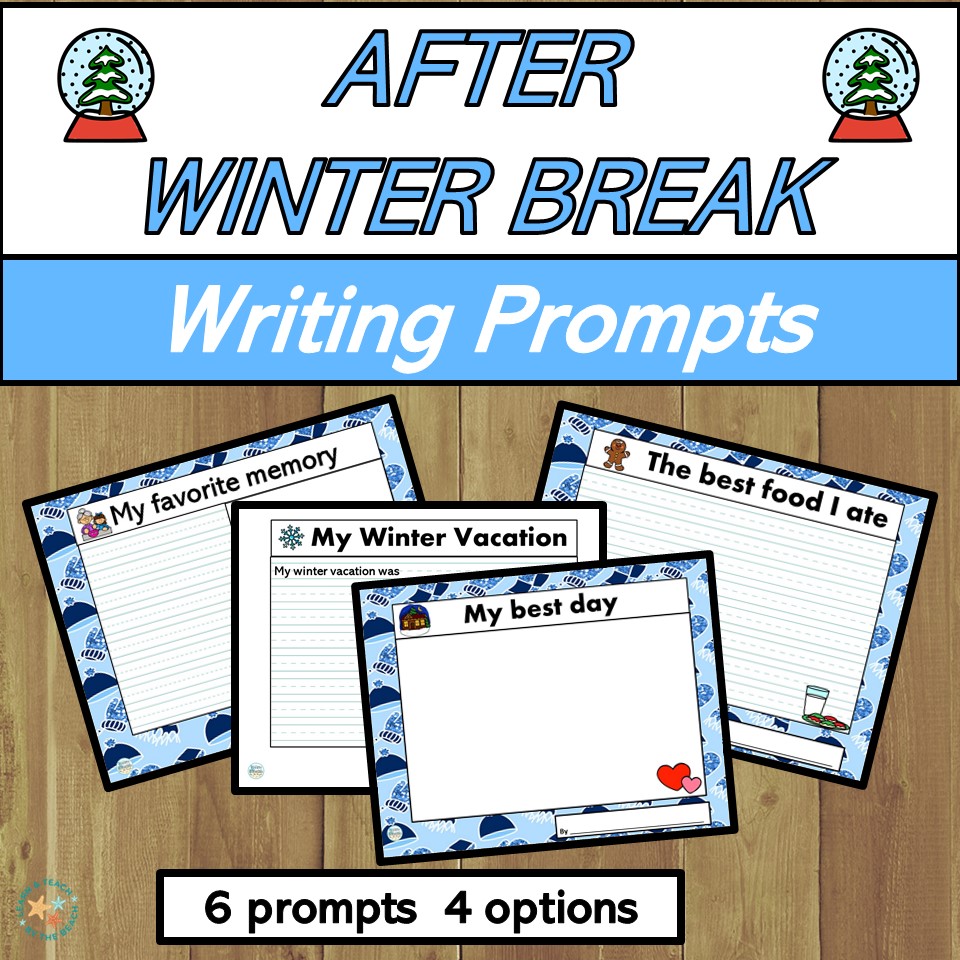An attention getter is something you use to get your students’ attention.
Why is this important? Teachers need to be certain to get their students’ attention before directions, transitions, answering a question and of course instruction. Often teachers start talking before having everyone’s full attention. Students then think it is okay to talk when the teacher is talking and then the teacher gets frustrated when no one is listening.
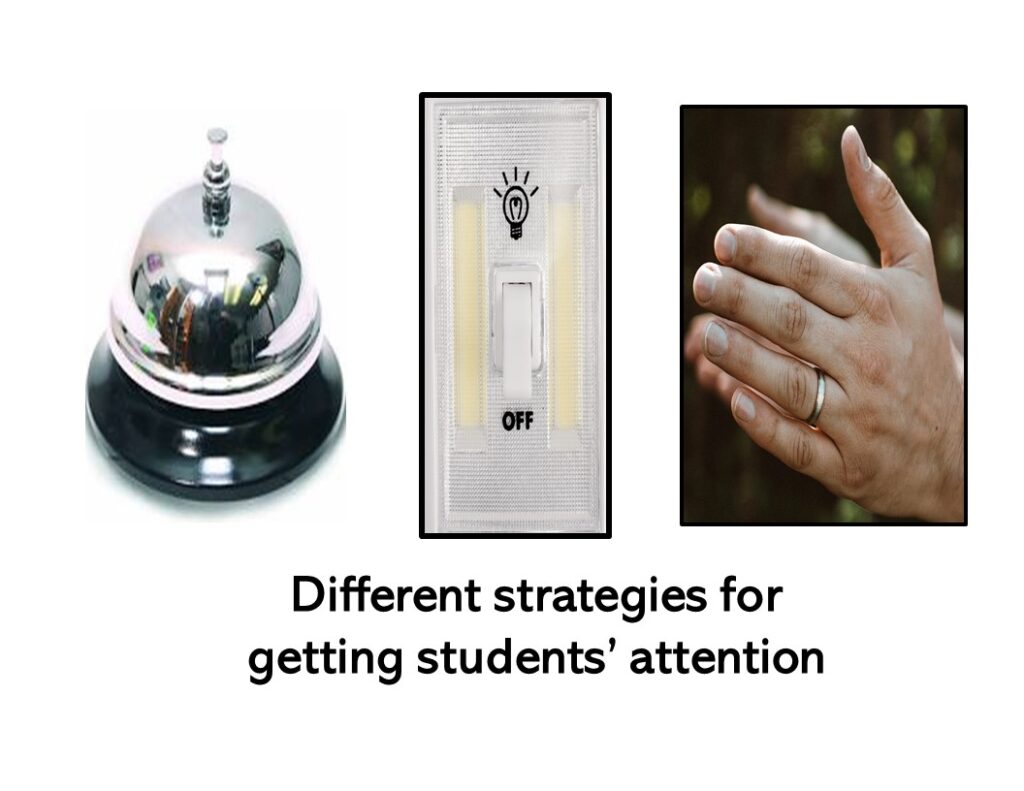
There are many different strategies to get students’ attention:
1. Use the lights: Teacher turns off the lights Students freeze and listen
2. Clapping rhythm: Teacher (clap clap clap clap clap) Students repeat the clapping rhythm
3. Bell or some other sound: Teacher rings the bell and students stop and listen
My favorite is a CALL and RESPONSE
This attention getter requires students to verbally respond to a teacher prompt.
For example
Teacher: “Hocus Pocus!”
Students: “Everybody Focus!”
No matter which attention getter you choose, use these 3 steps to teach your signal.
Step 1 Teach explicitly-When establishing an attention getting signal, make it clear what you want the students to do when they hear the signal. For example when I say “Hocus Pocus!” Students say, “Everybody Focus!” AND I EXPECT STUDENTS TO HAVE THEIR EYES ON THE TEACHER, HANDS QUIET, BODY STILL AND MOUTHS QUIET. I teach the specific expectations when I introduce the call back. I also have high expectations for all my students, which leads me to the second step.
Step 2 Be consistent with your expectations-Expect ALL of your students to show you ALL of your expectations EVERY time you use the call back signal. Wait if necessary for everyone to comply before giving instructions. Another tip is to stand in the same spot each time you want the attention of your class. Your students will associate this spot with you commanding attention.
Step 3 Practice-In order for your signal to be effective you will need to practice your consistent implementation and the consistent expectations of your students. Gaining your students attention before you begin is essential for effective instruction.
Want some call and response ideas?
Click on the picture to grab my resource!
Want a FREEBIE? Need to plan out your expectations?
Click on the picture to get a FREE expectation planning guide!

